by Richard William Nelson | Mar 5, 2015
 The finches Charles Darwin encountered on the Galapagos Islands have served as one of the most enduring examples of evolution throughout the twentieth century.
The finches Charles Darwin encountered on the Galapagos Islands have served as one of the most enduring examples of evolution throughout the twentieth century.
As Darwin explains in The Origin of Species, “one [finch] species had been taken and modified [changed] for different ends” – the essence of natural selection.
However, in the nineteenth century. The technology to scientifically validate these changes in the genetics of Darwin’s finches was inconceivable.
Continue Reading
by Richard William Nelson | Jan 9, 2015
 The genetic code is the universal language of life, from the first microbe to man. Searching for the origins of the first genetic code mystery, however, is akin to deciphering the evolution of life.
The genetic code is the universal language of life, from the first microbe to man. Searching for the origins of the first genetic code mystery, however, is akin to deciphering the evolution of life.
Over the past two years, the research team of Bojan Žagrović (pictured) at the Max F. Perutz Laboratories of the University of Vienna has been searching for a natural mechanism driving the genesis of the original genetic code − a longstanding challenge of the evolution industry.
Since the interactions between genetic material (nucleobases, DNA, and mRNA) and amino acids produce the workhorse molecules of life–proteins, Žagrović’s research team has been focusing on understanding what might have been the initial natural physicochemical mechanisms producing the original genetic code.
Continue Reading
by Richard William Nelson | Nov 28, 2014

Charles Darwin‘s fascination with insects began early in life. While studying at Cambridge University, his interest continued with earnestness, as he sent James Francis Stephens, his professor of entomology (insects), specimens and descriptions of the critters.
At the time, discussing the evolution of insect genetics would have been as relevant as discussing moon landings. Just months before setting sail on the HMS Beagle in 1831, Stevens published his recognition of Darwin’s work on insects (pictured right) in his widely popular Illustrations of British Entomology.
Continue Reading
by Richard William Nelson | Nov 4, 2014
 The European eel illustrates exactly why Charles Darwin’s theory of evolution has continued to be on the wrong side of science. Darwin once argued that.
The European eel illustrates exactly why Charles Darwin’s theory of evolution has continued to be on the wrong side of science. Darwin once argued that.
“By the theory of natural selection, all living species have been connected… So that the number of intermediate and transitional links, between all living and extinct species, must have been inconceivably great.”
Since the publication of The Origin of Species in 1859, Darwin’s “inconceivably great” number of evolutionary transitional links in the fossil record over the past 150 years remains missing despite the vast discovery of fossils.
Continue Reading
by Richard William Nelson | Oct 8, 2014
 The genetic mutation plus natural selection equation emerged as the most popular theory of biological evolution during the twentieth century.
The genetic mutation plus natural selection equation emerged as the most popular theory of biological evolution during the twentieth century.
However, with advances in biotechnology, evolutionary scientists have since increasingly challenged the credibility of this theory, popularly known as neo-Darwinism or the Modern Synthesis theory.
A recent study published in the journal Science by a Harvard research group undermines the theory that genetic mutations plus natural selection equals evolution in an experimental evolution model using the yeast microbe Saccharomyces cerevisiae.
The model demonstrates stasis – not evolution.
Continue Reading
by Richard William Nelson | Sep 18, 2014
 New high-resolution CT scans of the Taung Child skull (pictured left) by an international research team led by Ralph L. Holloway of Columbia University in New York raise renewed questions about the institute’s inane Smithsonian evolution storytelling practices.
New high-resolution CT scans of the Taung Child skull (pictured left) by an international research team led by Ralph L. Holloway of Columbia University in New York raise renewed questions about the institute’s inane Smithsonian evolution storytelling practices.
Discovered in 1924 in South Africa, models of the skull have been duplicated for natural history museums worldwide, including the Smithsonian, as evidence of human evolution. Found near Taung, South Africa, the lynchpin skull was tagged with the common name of Taung Child because of the fossil’s estimated age of 3 years. It was later named Australopithecus africanus, meaning the “southern ape from Africa.” However, Hollow’s new high-resolution CT scan images undermine the long-held pre-Homo fossil status of the skull.
Continue Reading
by Richard William Nelson | Aug 28, 2014
 Two new research studies, one on Himalayan songbirds and one on Brazilian ants, arrive at conflicting conclusions on speciation. The songbird research study was published in the prestigious British journal Nature, while the ant research study was published in the American journal Current Biology.
Two new research studies, one on Himalayan songbirds and one on Brazilian ants, arrive at conflicting conclusions on speciation. The songbird research study was published in the prestigious British journal Nature, while the ant research study was published in the American journal Current Biology.
Trevor D. Price of the University of Chicago led the songbird study, and Christian Rabeling of the University of Rochester led the Brazilian ant study, both highly respected international teams.
While the findings in the Himalayan songbird study support Charles Darwin’s speciation theory of geographical isolation, the Brazilian ant’s findings undermine his theory. Speciation, an evolutionary term intended to explain how new species might have developed from existing species, is in trouble once again.
Continue Reading
by Richard William Nelson | Aug 8, 2014
 Mark Armitage, a laboratory supervisor and widely published scientist for more than 30 years, was fired over dinosaur discovery by California State University, Northridge (CSUN) after publishing evidence of soft tissue extracted from a dinosaur fossil in a peer-reviewed journal.
Mark Armitage, a laboratory supervisor and widely published scientist for more than 30 years, was fired over dinosaur discovery by California State University, Northridge (CSUN) after publishing evidence of soft tissue extracted from a dinosaur fossil in a peer-reviewed journal.
Why did CSUN fire the scientist? Because the evidence undermines the long-standing dogma of the evolution industry. The dinosaur soft tissue, according to the prevailing dogma, should have died at least 60 million years ago. “This find cannot agree with an old earth,” an astute Examiner reporter explains:
“Even an old-earth creationist couldn’t explain it. But a young-earth creationist can.”
Continue Reading
by Richard William Nelson | Jun 9, 2014

The war over natural selection, then and now. Not only did Charles Darwin (1812-1882) plagiarize Patrick Matthew’s (1790-1874) (pictured left) work, but evolutionary scientists continue battling over the theory. Mike Sutton, a criminology expert at Nottingham Trent University, spent years cross-referencing the works of Darwin alongside those of Matthew. According to Sutton,
“I have no doubt, based on the weight of new evidence, that Darwin did read Matthew’s book and then went on to replicate his discovery and key themes.”
Science correspondent Sarah Knapton, in the article, “Did Charles Darwin ‘borrow’ the theory of natural selection?” published by The Telegraph (UK), reported on Sutton’s findings –
“Darwin must not only have been aware of Matthew’s work but borrowed from it heavily,” proving that “the naturalist [Darwin] lied.”
Continue Reading
by Richard William Nelson | May 22, 2014
 In The Origin of Species, Charles Darwin presented nature as a constant struggle, often coined as the “war of nature” or the “survival of the fittest.” As one dominates and eliminates others through a continuous process of competition and change, Darwin argued, “extinction and natural selection go hand in hand.” Recent freshwater studies, however, on algae defy Darwin.
In The Origin of Species, Charles Darwin presented nature as a constant struggle, often coined as the “war of nature” or the “survival of the fittest.” As one dominates and eliminates others through a continuous process of competition and change, Darwin argued, “extinction and natural selection go hand in hand.” Recent freshwater studies, however, on algae defy Darwin.
Bradley Cardinale (pictured left) of the University of Michigan led a research team that performed experiments on 60 species of freshwater green algae and their impact on environmental conservation. According to Marlene Cimons of the National Science Foundation, unexpectedly, the evidence “failed to support Darwin’s theory.”
Continue Reading
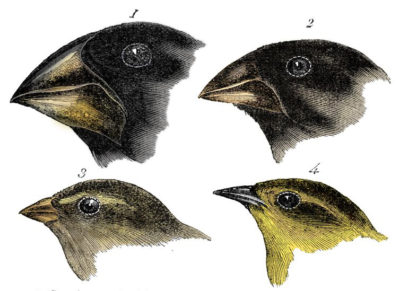 The finches Charles Darwin encountered on the Galapagos Islands have served as one of the most enduring examples of evolution throughout the twentieth century.
The finches Charles Darwin encountered on the Galapagos Islands have served as one of the most enduring examples of evolution throughout the twentieth century.


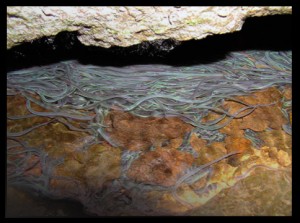 The
The 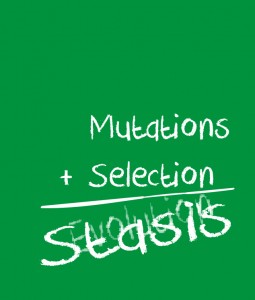
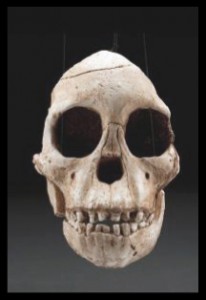
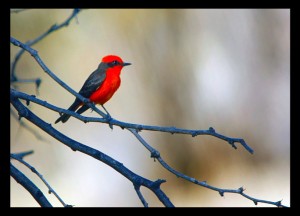 Two new research studies, one on Himalayan songbirds and one on Brazilian ants, arrive at conflicting conclusions on speciation. The songbird research study was published in the prestigious British journal Nature, while the ant research study was published in the American journal
Two new research studies, one on Himalayan songbirds and one on Brazilian ants, arrive at conflicting conclusions on speciation. The songbird research study was published in the prestigious British journal Nature, while the ant research study was published in the American journal 
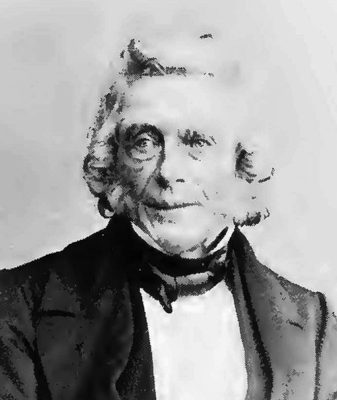
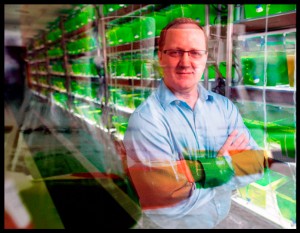 In
In 